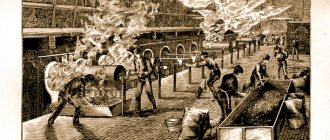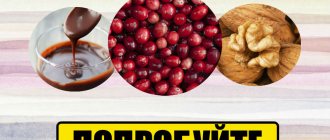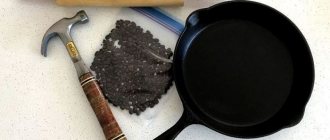07.05.2018
Honey, dry, washed... you've probably wondered, “What do these words mean when describing coffee?” or “Which coffee treatment will suit my tastes best?” Let's figure it out. Coffee processing affects the coffee's flavor profile and balance. There are three main methods of processing grains: washed, natural (dry) and honey (from the English honey - honey). There are alternatives, but they are rarely found in production and are usually a local processing method, such as Wet Hull, also called Giling Basah. We will also tell you about this method.
Washed coffee processing
Washed coffee processing is used mainly in Latin America and some areas of East Africa. It requires cleansing from the top protective layer of the berry and from the adhesive substance covering the skin of the grains themselves, using friction, fermentation and water. After picking, the berries are taken to a water mill. Next, the grains are pulled out of the berry itself using special equipment. At this stage, the grains are covered with a sticky liquid, which includes sugar and alcohols. This sticky substance affects the sweetness, sourness and aroma of coffee. Once the grains are separated from the berries, they are placed in fermentation tanks for 12 to 24 hours depending on temperature, although producers have begun experimenting with fermentation times to create new flavor profiles. For example, prolonged fermentation means that the beans absorb more sugars and therefore taste sweeter. After fermentation, the sticky substance breaks down and leaves the beans covered only with coffee “parchment”—the skin. Now the grains are ready for washing. This is done in tanks with clean water. At the exit, the grains harden, which means they are ready for drying. The grains are dried for approximately 10-22 days, during which they are turned regularly. This slow drying is considered optimal for obtaining balanced coffee. Washed processing focuses only on the grain, it reveals what is inside it, but not what is outside. Many believe that this method reveals the true character of the variety like no other, which is why most specialty coffees are processed this way.
Why do you need to know how to process grain?
Each method of processing beans reveals the flavor of the drink in its own way.
- As a result of using the dry method, the coffee becomes sweeter with light citrus notes and a pronounced aroma.
- Washed coffee is characterized by sourness. Some experts believe that this method most fully reveals the true aroma of coffee.
- Beans processed using the honey method have the sweetness inherent in natural coffee and the slight sourness of washed coffee combined with hints of honey.
- Indonesian coffee has notes of cocoa, tobacco, smoke, earth and cedar, unique to the Wet Hall method.
Knowing the taste characteristics of coffee beans using different processing methods, you can make a choice that suits your taste.
Dry coffee processing (natural)
The most ancient method of processing coffee. Traditionally used for large-scale coffee production due to low cost, such as in Brazil, or due to the limited amount of water in the region, such as Ethiopia. After harvesting, the coffee berries are dried in the sun. In large-scale production, they are usually placed on concrete or brick surfaces, sometimes on the ground to absorb moisture. For this reason, when dry processed, the coffee beans will have more defects - even an earthy smell due to drying on bare ground. Washed coffee has always been more expensive due to its purity and balance, but more and more producers are giving preference to naturally processed beans because of the scope for flavor experimentation. When carried out correctly, dried on absorbent surfaces and turned regularly, natural processing can produce a unique coffee taste with hints of strawberry, mango and blueberry in the finish. Drying occurs without clearing the top layers, which allows the berry to ferment naturally. The grains absorb all the substances contained in the berry. As a result, the brewed coffee has an unusual flavor profile. After drying, the berries resemble raisins in appearance, and the grains are cleared of their outer layers. Brewed coffee will have a pronounced sweet taste.
How do manufacturers control the honey process?
I asked Francisco, Weiner and Cesar how they control the Honey method to achieve the desired color. They said that, yes, it is not easy and they make a lot of effort. Throughout the harvest season (approximately 60 to 90 days), they visually inspect their patios (grain drying beds) and collect samples.
Francisco is in a unique position as he is both an exporter and a farmer. A summary of his precepts is to constantly seek new ways to improve the coffee industry in Costa Rica. As a result of these ambitious goals, a new trend has emerged: grain drying beds, which vary in color:
“These beds help farmers identify coffee beans throughout the drying process and further process them accordingly.” Francisco shares this invention of dividing into color palettes and corresponding grain processing schedules with other farms (Finnish farmers) who are willing to implement this experience on their plots. In turn, he encourages all farms, operations and even roasters to use this system.
Drying beds, various colors. ©Francisco Mena
Honey (semi-washed coffee processing)
When semi-washed, the coffee tastes literally honey-like, as if brown sugar had been added to a cup of coffee, although the name comes from the similarity in appearance and consistency of the beans to the consistency of honey. This method sometimes confuses roasters and consumers because it varies depending on the country of origin: it is usually somewhere between a washed process and a dry process. Hani processing is a hybrid process that is open to “author’s” interpretations. In Brazil, for example, research was conducted to find a way to process coffee that would use less water than washed coffee, but would be more resistant to defects than natural coffee. This is how they began to use khani, in which the top peel and partly the sticky substance are removed, after which the grains are sent for drying. The coffee turns out sweetish, as with natural processing, while adding a slight sourness to the taste. Central America and El Salvador pay more attention to experiments, so semi-washed processing uses a scientific approach and removes a strictly defined and verified amount of sticky liquid. This precise process of honey processing creates distinctive coffee flavors. The drying process becomes especially important here because the risk of mold and insect damage becomes greater.
Processing of coffee berries: natural pulp, honey, gilling basah.
The main difference between washed processing is that before the coffee beans are sent for drying, they need to be cleaned of pulp. This greatly reduces the likelihood of defects appearing during drying, which is why the price of such coffee is higher.
At the very beginning, coffee berries are placed in a tank of water, where ripe berries sink to the bottom and are sent for processing in a special depulpator machine.
In it, a mixture of berries is peeled and the pulp is removed, leaving the grains in a parchment shell and coated with gluten.
Next, gluten is removed from the grains in one of three ways:
-dry fermentation
-washed fermentation
-mechanical removal of gluten.
In the first two cases, the patch with gluten is sent to special fermentation tanks. If the tanks are filled with water, then washed fermentation takes place. If no water is used, then dry. During fermentation, which lasts, on average, about a day, the bacteria begin to eat the sweet gluten, helping to resolve it. Various devices are used to mechanically remove gluten. After this, the remaining gluten is washed off with water, and the patch, already without gluten, is sent for drying: the grains are laid out on the surface under the sun and regularly turned over for uniform drying.
After this, the grains are sent to “rest”. After the grain has been stored for the required time, the parchment layer is removed from it and sent for export.
Semi-washed processing of gilling basah coffee cherries
Historically, on the islands of Indonesia there are two methods of processing: in Java, Bali, Flores it is washed processing, in Sumatra and Sulawesi it is gilling basah. The main difference is: dry halled - the parchment shell is removed from the dried grain, while wet halled - from the still wet one.
In terms of process, giling basah is much like washed processing of coffee cherries. After harvesting, the pulp is removed from the berries in a depulpator, then the grain is left overnight in a concrete tank. After this, the grain is washed and dried. BUT, the whole point is that since the climate in Indonesia is very humid, drying lasts 2-3 days, during which time the grain dries to 50% humidity, when the standard is 10-12%. Next, it is transferred to the processing station, during which time it dries up to 30%. Where the parchment (parchment protective shell) is removed from it.
In Indonesia, this is done before the final drying of the grain, where it lies in the open sun on a patio or ground, without pouch. And here the amount of moisture decreases to 10-12%.
What comes out in the cup? Indonesian coffee is famous for its very specific characteristics: low acidity, greater density, and a woody, earthy aroma. And all because the grain is dried without a special shell, and it very easily transfers foreign odors and tastes.
Semi-washed coffee cherries processing: honey
Honey appeared in Costa Rica much later than pulp natural in Brazil, in the 2000s, and was also due to the lack of water on plantations. However, here we must also add that the farmers of Costa Rica were really concerned about the quality of the coffee, they wanted to make it better. To solve both problems, they began to look for ideas in the industry, and took the example of the Brazilians.
Now about the processing features. It is very important to understand that at the beginning of the 21st century, technology has stepped forward. While traditional depulpers in Costa Rica simply squeezed the skin and pulp out of the coffee cherry, leaving some pulp on the surface of the bean, the new ones removed the pulp completely. This was a thoughtful decision precisely because Costa Rica has historically been a washed-processing country. To implement the new treatment, farmers decided to set up depulpators in such a way that only a certain amount of pulp could be left on the grain. Due to the fact that its properties are sweet and sticky, this treatment was called miel (honey), but it entered the world community under the name honey.
Types of honey processing
Depending on the amount of pulp left on the grain, the time and characteristics of drying, several types of processing are listed: white, yellow, red, black and sometimes gold.
White honey is very close to the washed processing method: 10-20% pulp is left on the grain. Yellow - 25% pulp. Red - 50%. Black - from 70 to almost 100%. White and yellow honey are dried in the sun with little or no shade. Red is shaded and dried longer. Black is shaded even more, causing the drying time to proportionally increase even more. It is believed that the darker the hani, the more difficult it is to control, which is why it is more valuable in the market.
In a cup of coffee, honey processing produces fruity notes with mild acidity, purity of flavor and a fairly dense body. Yellow honey is more delicate and fruity, red is more juicy and sweet, black is the sweetest and densest.
This type of coffee berry processing was invented in Brazil in the 1970s and 80s with the goal of producing high-quality coffee with less water consumption.
The process looks like this: after harvesting, the berries are sorted through a tank of water into ripe and unripe, sending the ripe ones for further processing. After which, the peel and almost all the pulp are removed from them - at this stage, the process is exactly similar to washed Arabica beans. But then, the grains are immediately laid out on the patio or African tables for drying - the fermentation process. Since there is not much pulp left, the risk of defects is extremely low, while the likelihood that the future drink will have the right body and sweetness is high.
A cup of pulp natural grain will have the clean taste of the washed process, the natural sweetness of the dry process, as well as a good, dense body and low acidity.
Why is pulp natural processing still limited to Brazil?
Firstly, this type of processing requires a warm climate and low humidity. And these conditions have always been observed in Brazil: the plantations there are located at an altitude of 1000-2000 meters, the air is dry and there is little rain. For comparison, in Kenya, for example, coffee grows at an altitude of 1700-2000 meters, which is why the climate there is much cooler.
Secondly, pulp natural gives good body and tactility to the cups, but not too much acidity. For Brazilian coffee with chocolate and nut descriptors, the characteristics are appropriate. The picture is different for African grains: there is a slight acidity of the coffee, which is an indicator of low quality.
Very often the semi-washed processing is called the “hani” processing, but these are two different types of processing, although technically similar.
Wet Hall (Giling Basah)
This processing method is commonly associated with Indonesia, where Giling Basah translates to "wet grinding". During this treatment, the coated coffee bean is removed from the berry and then partially dried in the sun until the water content is reduced to 30-35%. The casing is then removed and drying continues until the water content is low enough to avoid mold. After this, the grains become greenish or blue in color, which distinguishes Indonesian processing from all others. This process is not without its challenges: by removing the protective layer at an early stage, the grains may be exposed to insects during the most critical stages of processing. Beans processed in Indonesia are usually associated with woody, earthy or pungent flavors, which are considered to be the result of this unique processing process. Some will admire such shades, while others will consider them a drawback.
Experimentation and innovation: the future of coffee processing
Traditionally, coffee countries have favored one processing method. For example, in Rwanda and much of Central America, washed processing has historically taken hold, while in Brazil, honey or natural processing has been more common. This is now gradually changing, thanks to the increasing demand for specialty coffee. More and more producers are trying other processing methods when natural and climatic factors allow. For example, in Nicaragua, Guatemala and Rwanda, many use honey and natural processing. There's more to it than simply choosing a processing method: some are trying fermentations without oxygen, while others are looking for catalysts to speed up fermentation. Also, many are experimenting for environmental reasons and trying to process grains with minimal use of water. The coffee processing process is not an often covered topic, but it is a fundamental part of the coffee industry. Next time you choose Vietnam's Lam Dong washed process or Brazil's Santos dry process, you'll know what to expect.
Try our coffee
Mix of grains
Espresso coffee
Blend of 100% Arabica beans. The aroma reveals notes of roasted peanuts and hazelnuts, while the taste is dominated by dark chocolate and walnuts. Soft aftertaste of cocoa and burnt sugar.
Peru
Coffee "Chanchamayo"
Rich and strong coffee with notes of bread in the aroma.
Brazil
Coffee "Santos"
The aroma is dominated by spices and cocoa. The soft nutty-chocolate taste is offset by a slight sourness at the end.











